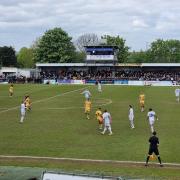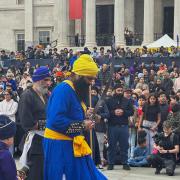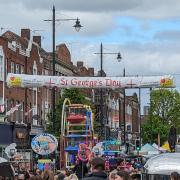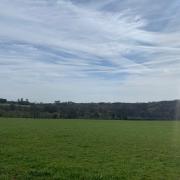
Friday the twenty fourth and Oxford Street is sent into a panic as thousands of Christmas shoppers run supposedly for their lives, some sheltering in the shops whilst others crowd the streets, in an attempt to get to safety. Huge numbers of police and ambulance services arrive on the scene, after gun shots are apparently heard around the area. It is soon confirmed no such thing had happened.
The vulnerability which an enormous amount of people felt is perhaps what triggered such an extreme response; nonetheless the mayhem that ensued raises the question of how a rumour led to such chaos and terror, as people became convinced that their lives were in mortal danger.
So much fear about a shooting that never happened is perhaps testament to the inherent paranoia that we, as a western nation, now have almost ingrained in our culture. Of course any threat of terror is one to be taken seriously, however it is the extent to which the panic spread so quickly that caused the issue on Friday, as armed police arrived, not as a precaution, but with the direct intention of preventing a terrorist threat. The immediate reaction of the emergency services is proof at how impressively prepared we are for the level of threat that is worryingly prevalent around the world. However, the mistaken sources of information claiming to have heard shots that never really occurred, are something that is particularly concerning, as social media- fuelled rumour seems to have had more impact than order and fact.
This might be having a profound effect on our mental health. We have created an environment based on a distrust of anyone outside our regular social sphere, and thus on Friday our fear of what would happen should an actual attack occur created mayhem, as people began to genuinely believe what they heard as rumour and more importantly, over social media. It is perhaps a demonstration of what is going wrong in society when a non-existent threat can cause just as much chaos as the real thing. The terrorism we often see on the news used to feel very distant whereas in recent years its proximity has increased the impact on our own lives and we begin to fear that it could become a daily occurrence. Thus we treat any incident, with or without reliable evidence, as an immediate threat to the fragile peace we live with.
Fear seems to spread so quickly in the modern age that, whether it’s the result of our constant state of vigilance or the immediate spread of information over social media, we have made it inherent in our lives. Perhaps we should consider ex-president Roosevelt’s words in his inaugural address in1933, “The only thing we have to fear is fear itself.”
by Benjamin Klauber-Griffiths
JCoSS


























